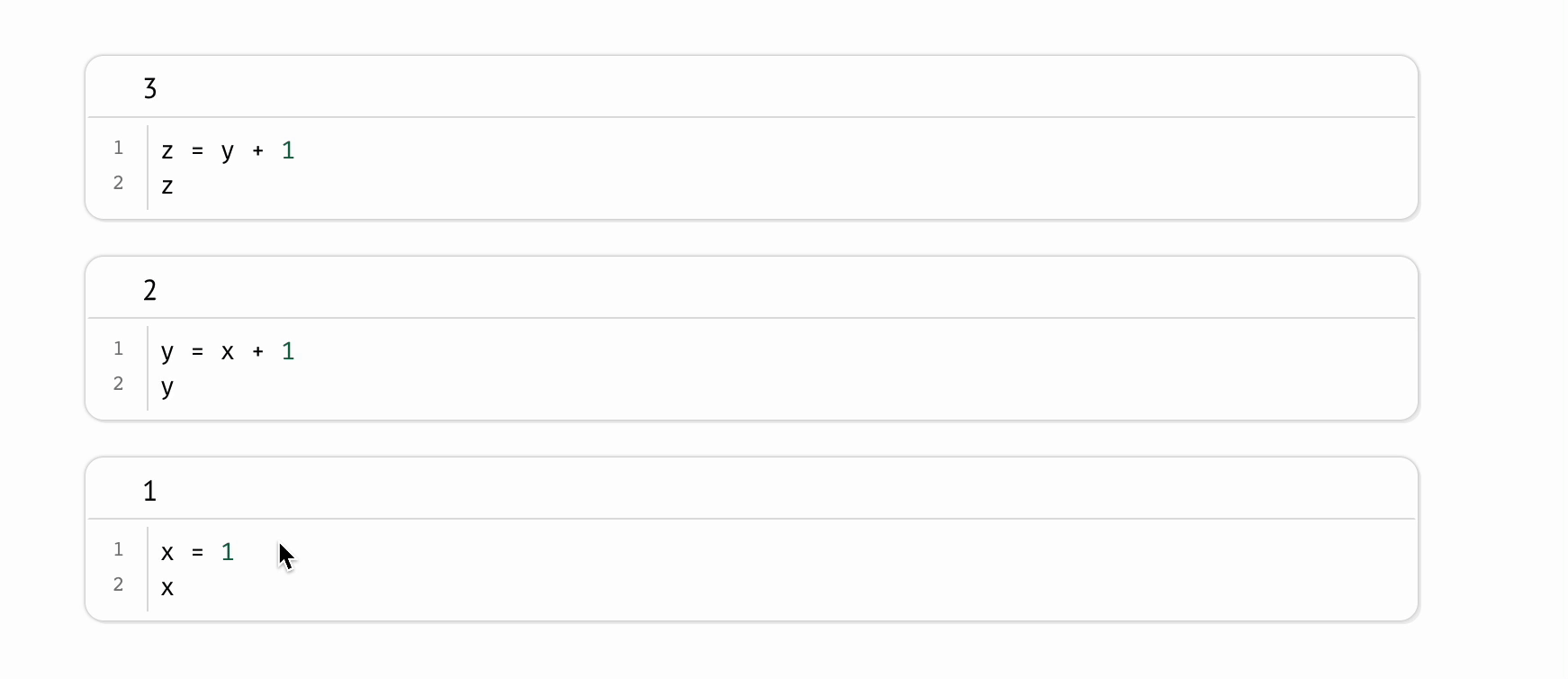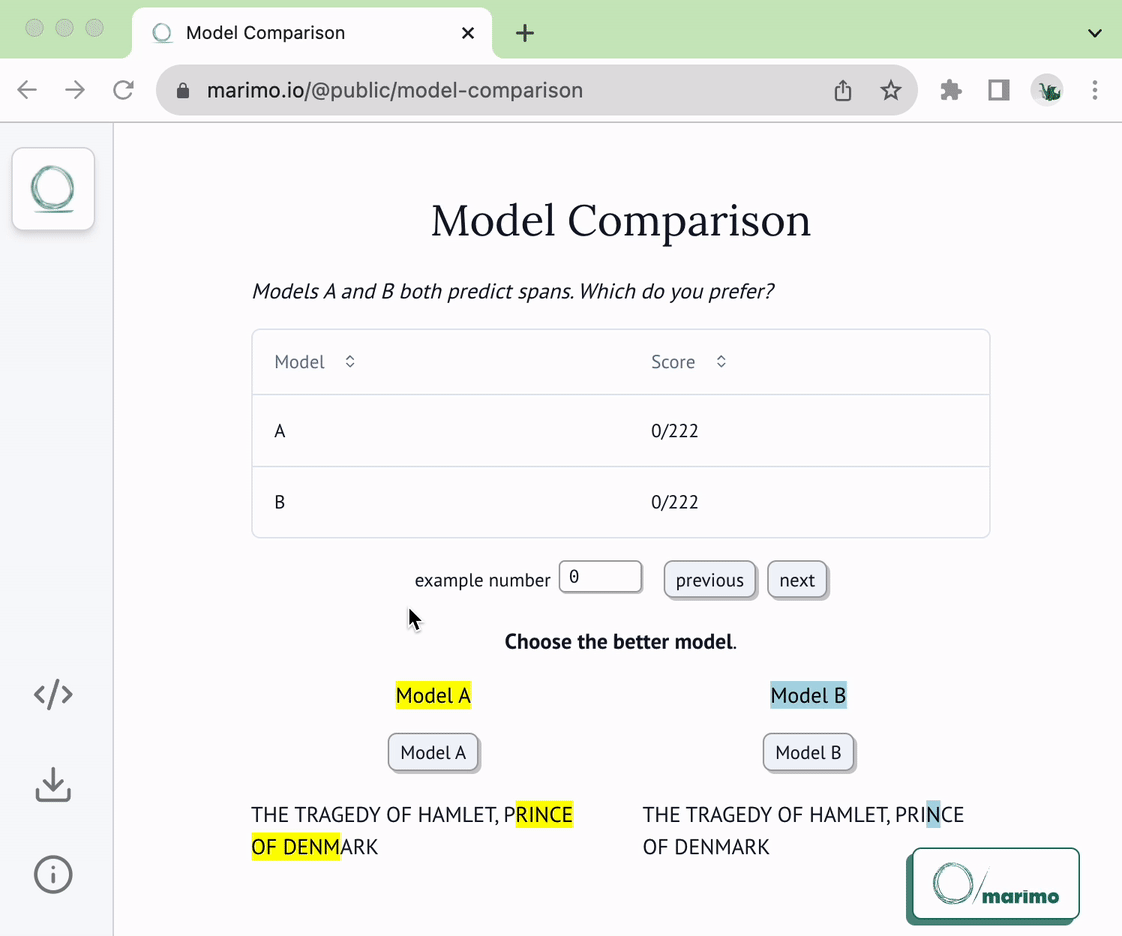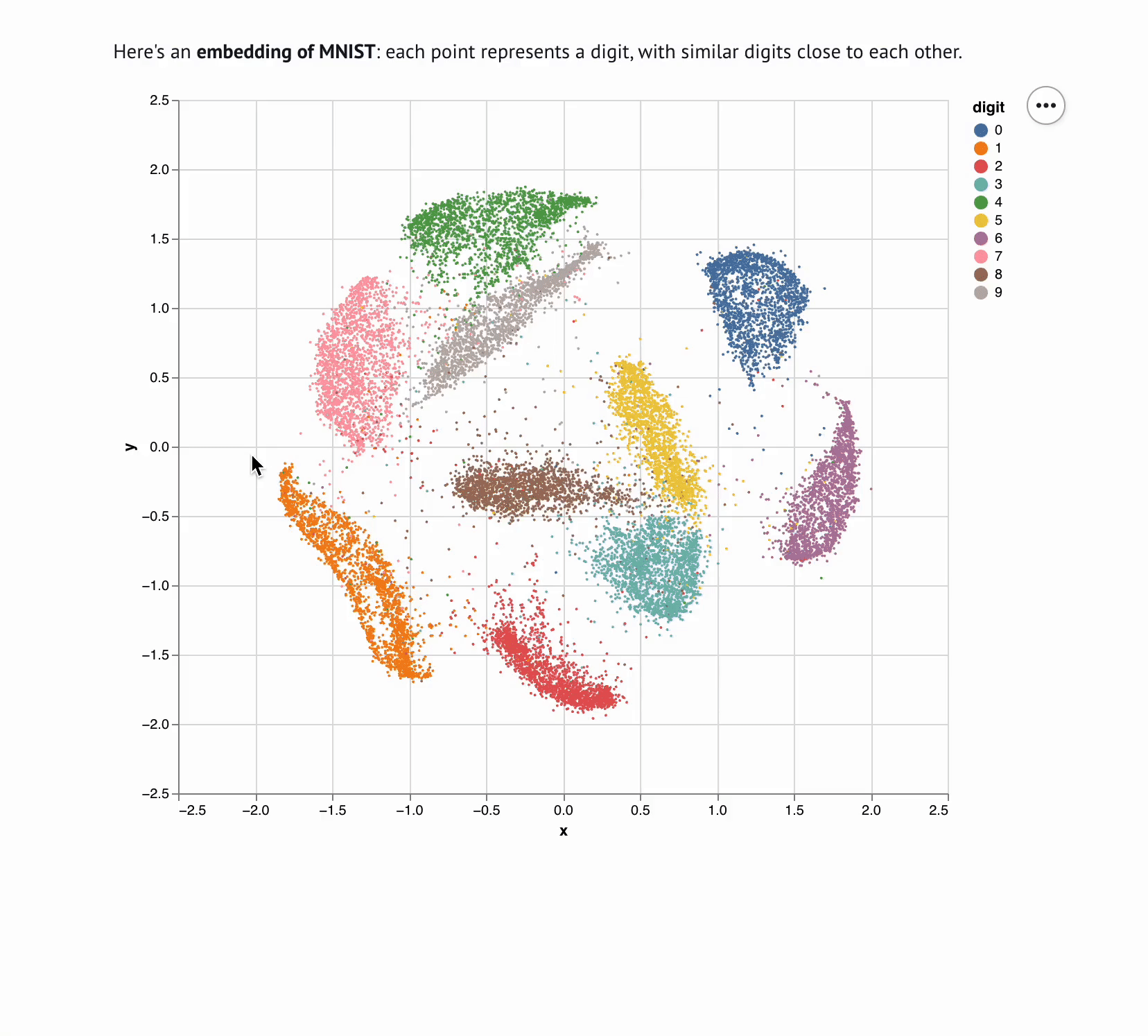A reactive Python notebook that's reproducible, git-friendly, and deployable as scripts or apps.
marimo is a reactive Python notebook: run a cell or interact with a UI element, and marimo automatically runs dependent cells, keeping code and outputs consistent. marimo notebooks are stored as pure Python, executable as scripts, and deployable as apps.
Highlights.
- reactive: run a cell, and marimo automatically runs all dependent cells
- interactive: bind sliders, tables, plots, and more to Python — no callbacks required
- reproducible: no hidden state, deterministic execution
- executable: execute as a Python script, parametrized by CLI args
- shareable: deploy as an interactive web app, or run in the browser via WASM
- git-friendly: stored as
.pyfiles
pip install marimo && marimo tutorial introTry marimo at our online playground, which runs entirely in the browser!
Jump to the quickstart for a primer on our CLI.
marimo guarantees your notebook code, outputs, and program state are consistent. This solves many problems associated with traditional notebooks like Jupyter.
A reactive programming environment. Run a cell and marimo reacts by automatically running the cells that reference its variables, eliminating the error-prone task of manually re-running cells. Delete a cell and marimo scrubs its variables from program memory, eliminating hidden state.
Deterministic execution order. Notebooks are executed in a deterministic order, based on variable references instead of cells' positions on the page. Organize your notebooks to best fit the stories you'd like to tell.
Synchronized UI elements. Interact with UI elements like sliders, dropdowns, and dataframe transformers, and the cells that use them are automatically re-run with their latest values.
Performant runtime. marimo runs only those cells that need to be run by statically analyzing your code. You can optionally disable expensive cells to prevent them from automatically running.
Batteries-included. marimo comes with GitHub Copilot, Black code formatting, HTML export, fast code completion, a VS Code extension, and many more quality-of-life features.
Installation. In a terminal, run
pip install marimo # or conda install -c conda-forge marimo
marimo tutorial introOr run in Gitpod.
Click this link to open the repo in a Gitpod Workspace:
https://gitpod.io/#https://github.com/marimo-team/marimo
Create notebooks.
Create or edit notebooks with
marimo editRun apps. Run your notebook as a web app, with Python code hidden and uneditable:
marimo run your_notebook.pyExecute as scripts. Execute a notebook as a script at the command line:
python your_notebook.pyAutomatically convert Jupyter notebooks. Automatically convert Jupyter notebooks to marimo notebooks with the CLI
marimo convert your_notebook.ipynb > your_notebook.pyor use our web interface.
Tutorials. List all tutorials:
marimo tutorial --helpSee the FAQ at our docs.
marimo is easy to get started with, with lots of room for power users. For example, here's an embedding visualizer made in marimo (video):
Check out our docs,
the examples/ folder, and our gallery to learn more.

|
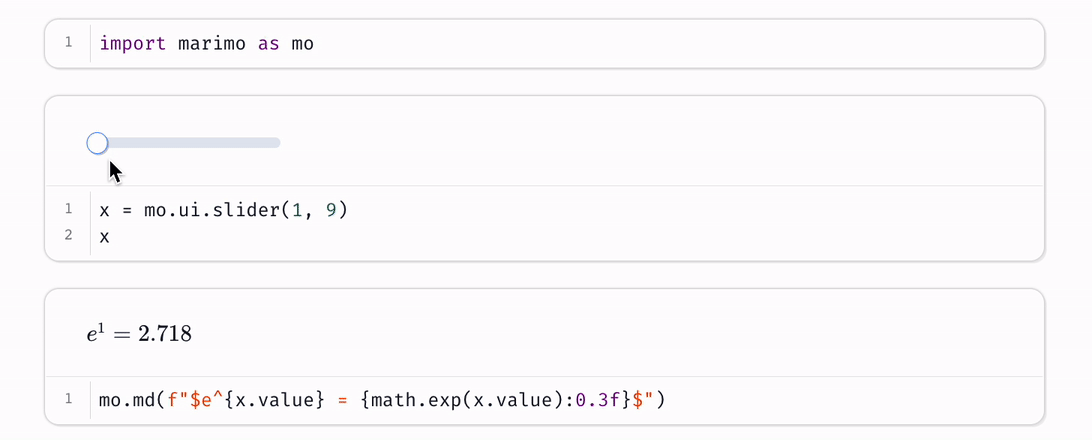
|
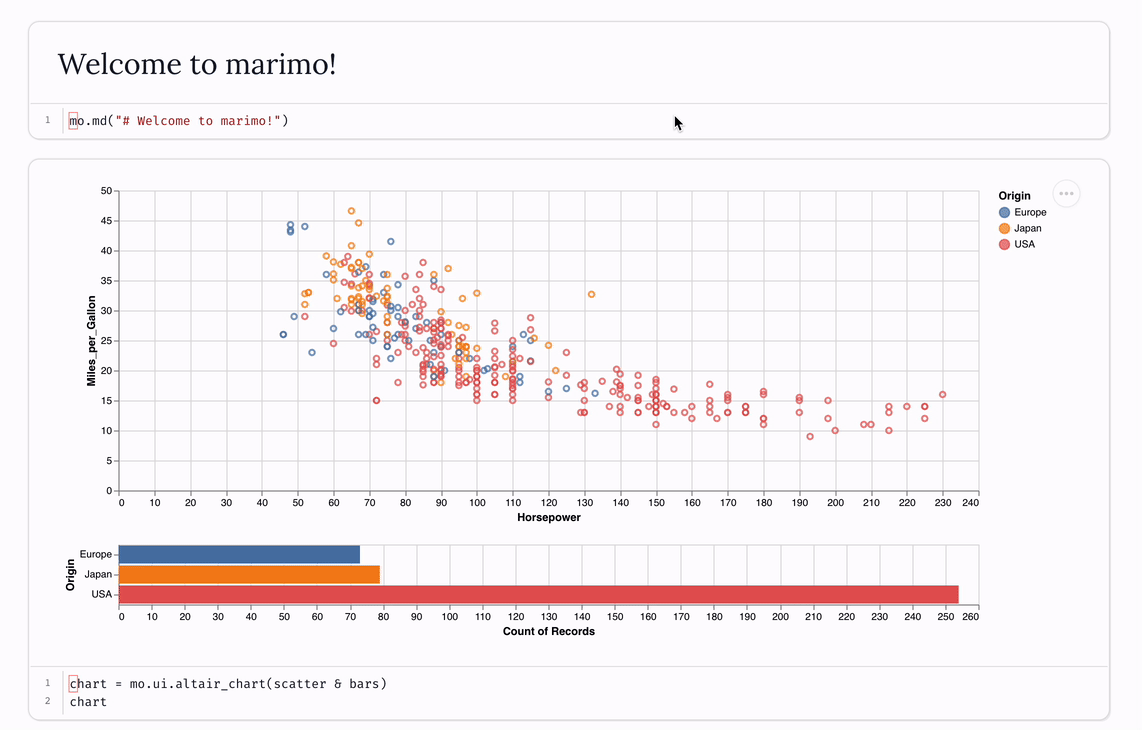
|
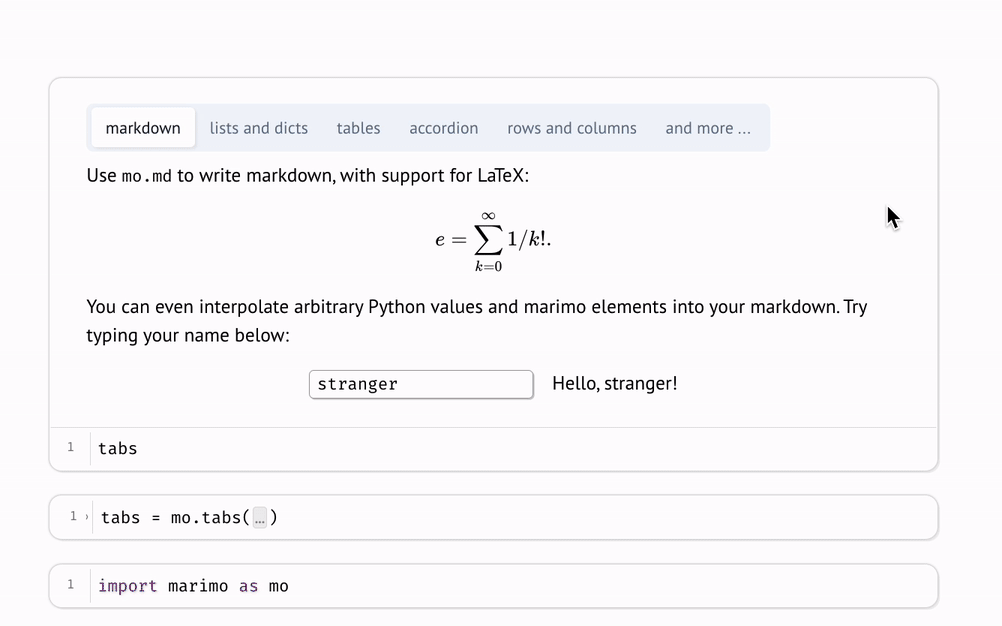
|
| Tutorial | Inputs | Plots | Layout |
|
|
|
|
|
We appreciate all contributions! You don't need to be an expert to help out. Please see CONTRIBUTING.md for more details on how to get started.
Questions? Reach out to us on Discord.
We're building a community. Come hang out with us!
- 🌟 Star us on GitHub
- 💬 Chat with us on Discord
- 📧 Subscribe to our Newsletter
- ☁️ Join our Cloud Waitlist
- ✏️ Start a GitHub Discussion
- 🐦 Follow us on Twitter
- 🕴️ Follow us on LinkedIn
marimo is a reinvention of the Python notebook as a reproducible, interactive, and shareable Python program, instead of an error-prone JSON scratchpad.
We believe that the tools we use shape the way we think — better tools, for better minds. With marimo, we hope to provide the Python community with a better programming environment to do research and communicate it; to experiment with code and share it; to learn computational science and teach it.
Our inspiration comes from many places and projects, especially Pluto.jl, ObservableHQ, and Bret Victor's essays. marimo is part of a greater movement toward reactive dataflow programming. From IPyflow, streamlit, TensorFlow, PyTorch, JAX, and React, the ideas of functional, declarative, and reactive programming are transforming a broad range of tools for the better.



